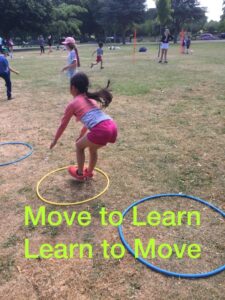Physical Literacy
Physical Literacy can be described as the motivation, confidence, physical competence, knowledge and understanding to value and take responsibility for engagement in physical activities for

A recent research article by Study International Staff revealed that kids today are lacking Physical Literacy. That comes as no surprise given the sedentary lifestyles children embrace and a life filled with smartphones and electronic devices. Poor Physical Literacy has long lasting impacts, even into adulthood. Inactivity can lead to obesity and health-related diseases. Our indoor lifestyles are even affecting our social skills. The above-mentioned article discussed a longitudinal study conducted over 15 years. Fifteen years ago children were able to bounce and catch a ball 14 times in 20 seconds. Today they can only bounce and catch a ball 8 times. Fifteen years ago, kindergarten children could stand on one leg for 22 seconds. Presently, they can only achieve 15.4 seconds.
An article by Behan et al., (2018) on Getting Ireland’s Children Moving, quotes that the World Health Organisation predicts that Ireland will be ‘the most obese nation in Europe by 2030’. The researchers stated that fundamental movement skills (FMS) proficiency has been associated with beneficial health outcomes and is most successfully developed during early school years. They found that 78% of children scored ‘very poor’ or ‘below average’ in FMS proficiency.
We were born to move. Movement is essential to learning and a good understanding of what Physical Literacy is will help children to be:
Children need a wide variety of physical activities in multiple environments (water, land, air, snow). They need to experience many different movement activities such as running, jumping, swimming, balancing, kicking, etc. These movement experiences need to be fun and positive.
Neuroscientists have documented that the brain grows by experiences. Each experience build a neural connection (or synapsis) in the brain. The more experiences, the more synapses. Each time the experience is repeated, the connection becomes stronger and more permanent.
Children also need to participate in sport, both at an individual and a team level. And finally, they need a good understanding of physical development, nutrition and exercise. All these concepts are the foundation of Physical Literacy and will motivate them to pursue physical activity which in turn will develop their confidence to be active for life (Cleland, 2018).
The benefits of being physically active is well documented:
Furthermore, there are strong links between being physically active and better brain development. Physical activity can increase brain development by strengthening the neural connections in our brain (Boettcher, 2017).
A very good article by Active For Life states the importance of Physical Literacy across the lifespan:
Physical Literacy is a simple solution to help kids become more active, more healthy and successful for life. Tune in to CoDex360 podcasts for tips and ideas on how to ‘Move to Learn & Learn to Move’, with Aled Hughes and Marinet Brennan.
Follow us:
Instagram: @codex360_movetolearn
Facebook: Codex360_movetolearn
TikTok: @codex360_movetolearn
Youtube: Codex360
Podcasts: Codex360 https://podcasts.apple.com/ie/podcast/codex360/id1531481578
Physical Literacy can be described as the motivation, confidence, physical competence, knowledge and understanding to value and take responsibility for engagement in physical activities for
“The most powerful tool for fostering the growth and development of neural connections in your child’s brain is physical movement.” (Gill Connell, child development expert)
When you read to your child you are helping your child’s mind grow and develop. Reading aloud to your child helps your child learn more
“Reading to your child from an early age is one of the most important things you can do to help prepare your child for mastery
What is Developmental Coordination Disorder (DCD)? DCD is a chronic motor skill disorder seen in children and youth, which significantly affects activities of daily living,
Move to Learn & Learn to Move: movement and literacy Sometimes life is so busy
Fill in your details and we’ll get back to you in no time.